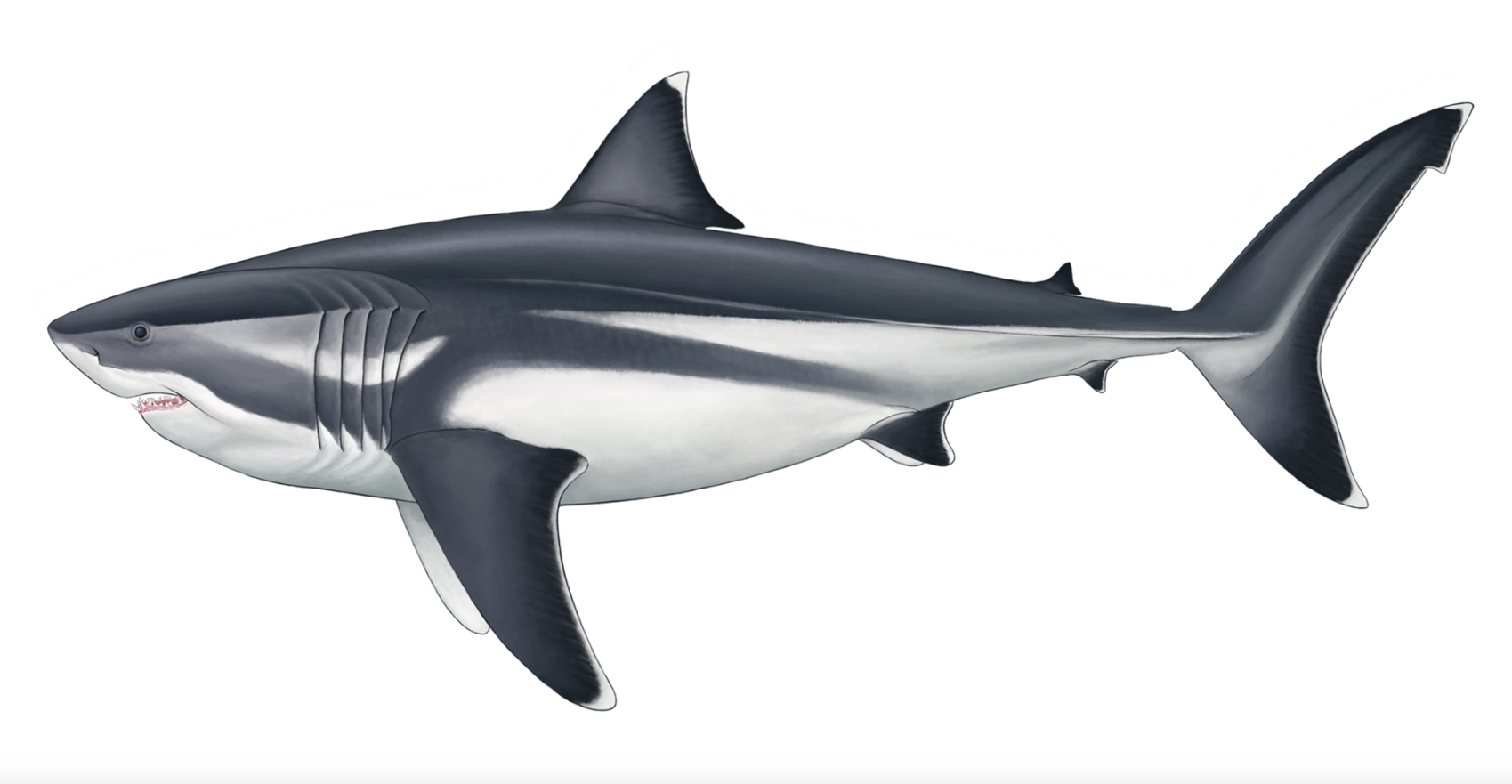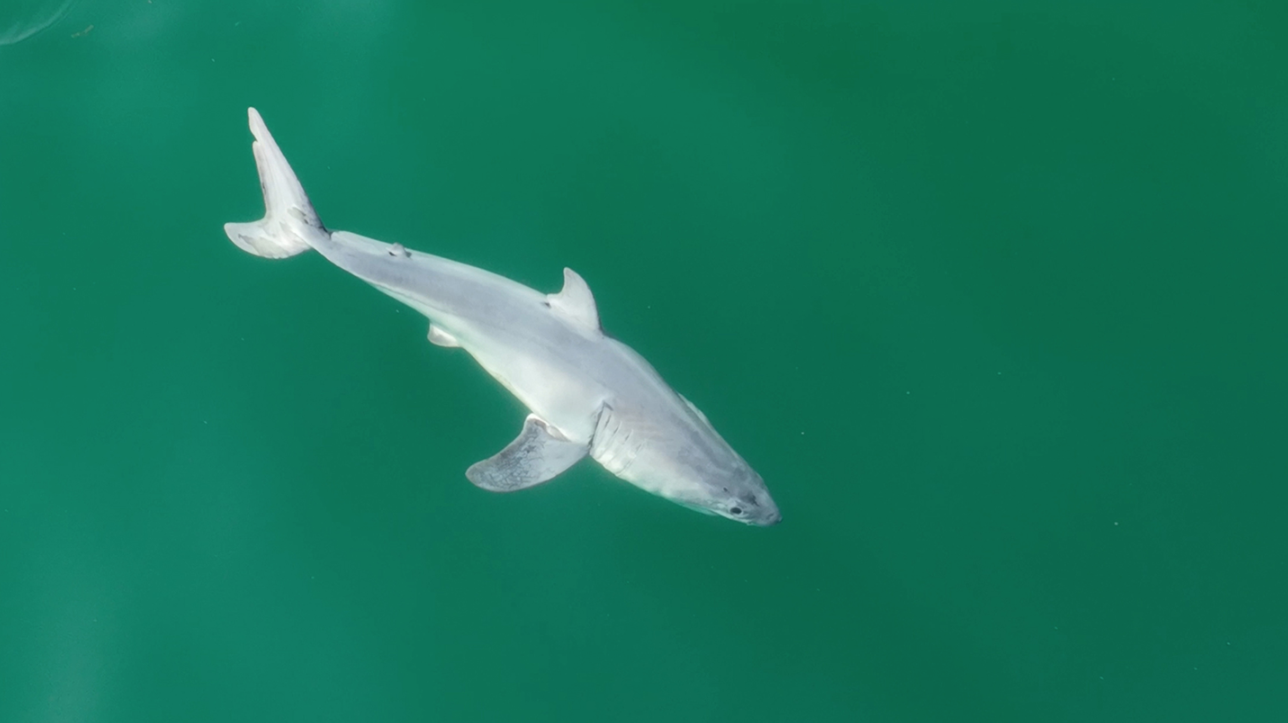Drone footage shot off the coast of Southern California in January 2024 revealed what may have been the first-ever sighting of a newborn Great White Shark in the wild. Shark researcher Phillip Sternes and wildlife filmmaker Carlos Gauna captured that footage.
Salem Clemens catches up with Phillip Sternes, finds out how he developed a love for sharks, and talks about his research, and some of his recently published papers.
What made you interested in sharks? What are your current short-term and long-term goals? How did it feel to be the first to capture potential evidence of a newborn white shark?
I am currently a PhD candidate at the University of California, Riverside, who focuses on shark ecomorphology. I first became fascinated with sharks when I was five years old after I watched Jaws for the first time. I hope to continue to be a shark researcher for the rest of my life. If Carlos and I are the first people to capture images of a newborn white shark it is very exciting and an honor.
Your publication “Novel aerial observations of a possible newborn white shark (Carcharodon carcharias) in Southern California,” while acknowledging the possibility the shark may have had a skin condition, seems to lean towards the idea it is indeed a newborn white due to the fact the film seems to slough off its body suggesting it’s not a permanent condition. If this is indeed a baby white shark, how does this implicate our understanding of their reproductive behavior and proximity to the Baha California region?
This would support the previous hypotheses from other research that white sharks use the near shore area from Southern California to Baja California and that more management might need to be implemented.
On the day of filming, you were taking drone footage with Carlos Guana, who captured the images. What role does drone surveillance have in the future of shark research, and do you find it likely you can one day capture a birthing even in the same region with drone technology now that there seems to be strong evidence suggesting it’s a birthing site?
Drone surveillance has completely changed shark science. It has provided us with an unprecedented view of shark’s natural behavior. We have now made many new discoveries. If this is a birthing location, we know when and where to film but capturing the exact moment will still remain difficult.
What is the importance of understanding the life history of white sharks?
White sharks are important predators for their respective ecosystems. If the white shark population continues to grow our ecosystems will be in better shape. Thus, understanding their life history can help in conservation measures.
What are the greatest threats to sharks today, and what practical solutions do you see to those problems?
The single greatest threat is overfishing. If we do not get this properly managed soon, we will start seeing local and then global extinctions of certain species. We need better management and restrictions, especially on commercial fishing.
Your publications all seem to involve the study of shark morphology – some in modern situations and some with ties back to their evolution as a family – what do you hope to pursue research-wise after your Ph.D., and what are you currently working on for your thesis?
I hope to continue to do what I am doing now. I enjoy studying the morphology of both the extinct and extant sharks to understand their evolution.
In your publication “White shark comparison reveals a slender body for the extinct megatooth shark, Otodus megalodon (Lamniformes: Otodontidae),” you and others argue that Megalodon may have had a much thinner and longer body shape, which may have affected its physiology in significant ways. You make a modern comparison to the mako shark as a potential model instead of the white shark we culturally connotate Megalodon with. One theory I have seen posited for the extinction of the Megalodon is that its food may have migrated away from the warmer waters it inhabited. I know that migration has been behavior observed in Mako sharks. Could the Megalodon’s newly found morphology suggest it also conducted migration and thus potentially eliminate the food migration theory as an explanation for their extinction?
This is an excellent question. I proposed the Megalodon could look like a Mako but in reality, we do not know what the shark looked like. It does seem to have a more slender body than originally thought.

For people who have not read the paper on Megalodons, explain why current models are not supported by science and what your team’s findings mean for our understanding of Megalodons
The previous models rely on flawed assumptions. In this case, to build a megalodon based on a great white shark it should share certain features. When looking at the relationship between vertebra and body length we see major differences between white sharks and megalodons. We will have to rethink our understanding of megalodons going forward.
Do you think that without direct fossil evidence, we will be able to elute a more accurate body plan of Megalodon – in other science, the rise of machine learning has allowed for highly accurate simulations and predictions in silico – do you see AI as having a place in determining body structure of extinct animals in the near future?
I will be conservative in saying unless we have direct fossil evidence, we will not know what the megalodon looked like, or any other extinct animal.
What does the morphology of sharks tell us about their behavior? What factors can affect that morphology?
There appears to be a strong relationship between ecology and morphology in sharks, which is fascinating. In order to be a ‘successful’ organism, it needs optimal morphology for peak performance in the environment, and this goes with swimming, eating, and evading predators.
In your publication “Growing out of the fins: implications of isometric and allometric scaling of morphology relative to increasing mass in blue sharks ( Prionace glauca ),” you mention both isometric and allometric scaling and their relation to blue sharks. Could you summarize these terms and what you found in your study of blue sharks?
While this is still a preprint, it appears blue sharks show some interesting growth patterns. We hypothesize that as blue sharks get larger their body shape must grow in certain ways to be able to properly locomote through the water. It’s similar to how humans grow, we are born with big heads and longer arms but as we grow those parts grow at different rates. Blue sharks do something similar in their body.
What’s the next step for research on white sharks? What are some of the most significant questions that need to be answered about them as a species?
My plan is, along with Carlos, to go back out there and continue to learn more and more about their life history and natural behavior and share this with both the scientific and public community.
Main image credit Carlos Gauna/The Malibu Artist



